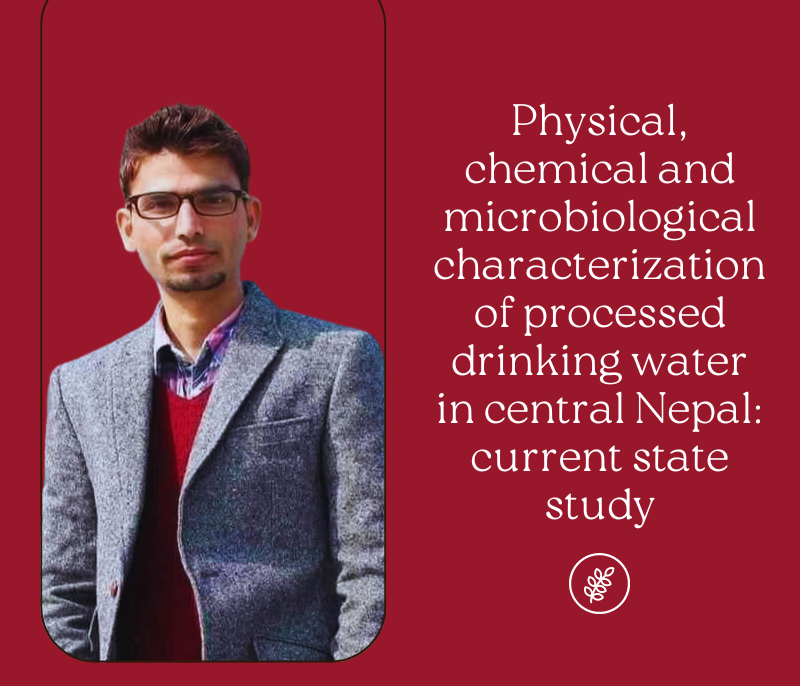
Physical, chemical and microbiological characterization of processed drinking water in central Nepal: current state study
This study was undertaken to analyse processed bottled water for drinking water quality. Altogether 50 water samples of different brands were randomly collected from public places in Kathmandu valley. The samples were analysed for physical (turbidity, pH and electrical conductivity), chemical (iron, manganese, arsenic, cadmium, chromium, lead, ammonia, fluoride, chloride, sulphate, copper, total hardness, calcium, mercury and aluminum) and microbiological (fecal coliform and total coliform) parameters. The results revealed that >300 CFU/100 mL of Escherichia coli (E. coli) (fecal coliform) and total coliform (TC) bacteria were counted in 76 and 92% samples, respectively. The bacterial population was beyond the limit of the Department of Food Technology and Quality Control (DFTQC) (0 CFU/100 mL of water). Chemical parameters analysed for fluoride (0.5–1.5 mg/L) and ammonia (1.5 mg/L) exceeded the DFTQC values. The range of fluoride estimated was 0.001–2.37 mg/L and the maximum concentration of ammonia was 4.66 mg/L. Most of the processed water crossed the threshold standard of E. coli and TC bacteria and may pose a risk if used for drinking purposes. Therefore, to minimize the public health risk of contaminated water, scientific methods and standards of purification should be followed during the process, production, storage, and delivery of processed water.
- Keywords ammonia, chemical parameter, fecal coliform, Kathmandu, public health, total coliform

